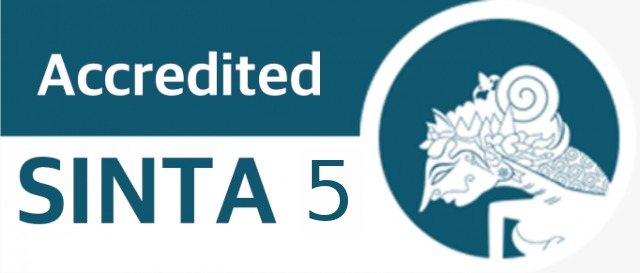Sistem Informasi Sekolah Digital SMP Negeri 5 Berbasis Website
Kata Kunci:
Information Systems, Digital Schools, Website-Based, Educational InnovationAbstrak
This study aims to design and implement a website-based digital school information system at SMP Negeri 5, which is expected to improve the efficiency of educational management and information access for students, teachers, and parents. The method used in this study is system development with an Agile approach, which includes the stages of needs analysis, design, implementation, and evaluation. The results of the study indicate that the developed information system is able to provide important features such as student data management, class schedules, announcements, and discussion forums. The system trial showed a positive response from users, with a user satisfaction level reaching 85%. In addition, this system also provides easy access to real-time information, thus supporting a more effective teaching and learning process. This study recommends further development for system integration with e-learning applications and training for users to maximize the benefits of the Digital School information system being promoted by the government. Thus, the website-based digital school information system at SMP Negeri 5 is expected to serve as a model for other schools in facing the challenges of education in the digital era and the rapid development of technology that requires schools to have a teaching model that is appropriate to the development of Gen Z.
Unduhan
Referensi
Bachtiar, Y. (2025). Rancangan Sistem Informasi Berbasis Web dengan Metode Rapid Application Development (RAD) Pada Perpustakaan Sekolah Menengah Kejuruan. Journal of Informatics Management and Information Technology, 5(3), 267–274.
Hariyanto, E., & Wahyuni, S. (2020). Sosialisasi Dan Pelatihan Penggunaan Internet Sehat Bagi Anggota Badan Usaha Milik Desa ( Bumdes ) Mozaik Desa Pematang Serai. Jurnal ABDIMAS BSI, 3(2), 253–259.
hermansyah. (2021). Perancangan Aplikasi Pembelajaran Interaktif Pengenalan Unsur Kimia dengan Metode Computer Based Instruction ( CBI ). 9(3), 74–78.
Hermansyah, H., Wijaya, R. F., & Wahyuni, S. (2024). Desain Aplikasi Cinta Mangrove Berbasis Mobile Di Desa Kota Pari Dengan Metode Waterfall. Senashtek 2024, 2(1), 42–48.
Marlina, L., Muslim, M., Siahaan, A. U., & Utama, P. (2016). Data mining classification comparison (naïve bayes and C4. 5 algorithms). Int. J. Eng. Trends Technol, 38(7), 380–383.
Marlina, L., Wahyuni, S., & Sulistianingsih, I. (2023). The Information System for Promotion of Products for Micro, Small, and Medium Enterprises in Hinai Village is Website-Based With a Membership Method. International Journal Of Computer Sciences and Mathematics Engineering, 2(2), 141–151.
Rahmadi, F., Munisa, M., Rozana, S., Rangkuti, C., Ependi, R., & Harianto, E. (2021). Pengembangan manajemen sekolah terintegrasi berbasis sistem informasi di sumatera utara. Fitrah: Journal of Islamic Education, 2(2), 96–109.
Sari, S. N., Kaban, R., Khaliq, A., & Andari, A. (2022). Sistem Penjadwalan Mata Pelajaran Sekolah Menggunakan Metode Hybrid Artificial Bee Colony (HABC). Jurnal Nasional Teknologi Komputer, 2(1), 20–32.
Sumartono, I., Wadly, F., Syaula, M., & Rizki, A. A. (2022). Rancangan Sistem Informasi Manajemen Keuangan dan Inventaris Pada Serikat Tolong Menolong (STM) Desa Kota Pari. Brahmana: Jurnal Penerapan Kecerdasan Buatan, 4(1A), 56–60.
Supiyandi, S., Rizal, C., & Fachri, B. (2023). Implementasi Model Prototyping Dalam Perancangan Sistem Informasi Desa. Resolusi: Rekayasa Teknik Informatika Dan Informasi, 3(3), 211–216.
Supiyandi, S., & Zen, M. (2019). Sistem Pendukung Keputusan Proses Kenaikan Jabatan dan Perencanaan Karir Pada PT. ABC Dengan Metode Profile Matching. ALGORITMA: JURNAL ILMU KOMPUTER DAN INFORMATIKA, 3(1), 55.
Wahyuni, S., Hariyanto, E., & Sebayang, S. (2022). Pelatihan Camtasia Pada Guru SD Panca Budi Untuk Mendukung Transformasi Digital Sekolah Masa Pandemi Covid-19. ETHOS: Jurnal Penelitian Dan Pengabdian Kepada Masyarakat, 10(1), 59–67.
Wahyuni, S., Hermansyah, H., & Yel, M. B. (2022). Aplikasi Bank Sampah Berbasis Website Dalam Mewujudkan Desa Bebas Sampah. Prosiding Seminar Nasional Riset Information Science (SENARIS), 4(2), 242–250.
Wahyuni, S., Khaliq, A., Amrul, H. M. Z. N., & Akbar, A. (2024). Designing a Website-Based Kota Pari Village Mangrove Application with the Agile Scrumban Method. Proceeding of International Conference on Artificial Intelligence, Navigation, Engineering, and Aviation Technology (ICANEAT), 1(1), 415–419.
Wahyuni, S., & Marbun, M. (2020). Implementation of Data Mining In Predicting the Study Period of Student Using the Naïve Bayes Algorithm Implementation of Data Mining In Predicting the Study Period of Student Using the Naïve Bayes Algorithm. IOP Confrence Series: Materials Science and Engineering, 4–11. https://doi.org/10.1088/1757-899X/769/1/012039
Wahyuni, S., & Mesra, B. (2022). Mozaik BUMDES Waste Bank Application Development Using Android-Based GPS. Jurnal Mantik, 6(3), 2781–2788.
Wahyuni, S., & Wadly, F. (2023). Application Of Inventory And Service Transactions On Web-Based Cv Medan Teknik using the Agile Kanban Method. International Journal Of Computer Sciences and Mathematics Engineering, 2(1).
Unduhan
Diterbitkan
Cara Mengutip
Terbitan
Bagian
Lisensi

Artikel ini berlisensiCreative Commons Attribution-ShareAlike 4.0 International License.
HAK CIPTA
Hak cipta atas artikel apapun pada Jurnal Nasional Teknologi Komputer (JNASTEK) dipegang penuh oleh penulisnya dibawah lisensi Creative Commons Attribution-ShareAlike 4.0 International License.
1. Penulis mengakui bahwa Jurnal Nasional Teknologi Komputer (JNASTEK) berhak sebagai yang mempublikasikan pertama kali dengan lisensi Creative Commons Attribution-ShareAlike 4.0 International License - CC BY-SA.
2. Penulis dapat memasukan tulisan secara terpisah, mengatur distribusi non-ekskulif dari naskah yang telah terbit di jurnal ini kedalam versi yang lain (misal: dikirim ke respository institusi penulis, publikasi kedalam buku, dll), dengan mengakui bahwa naskah telah terbit pertama kali pada Jurnal Nasional Teknologi Komputer (JNASTEK).
LISENSI
Jurnal Nasional Teknologi Komputer (JNASTEK) diterbitkan berdasarkan ketentuan Creative Commons Attribution-ShareAlike 4.0 International License. Lisensi ini mengizinkan setiap orang untuk menyalin dan menyebarluaskan kembali materi ini dalam bentuk atau format apapun, menggubah, mengubah, dan membuat turunan dari materi ini untuk kepentingan apapun, termasuk kepentingan komersial, selama mereka mencantumkan kredit kepada Penulis atas ciptaan asli.



















